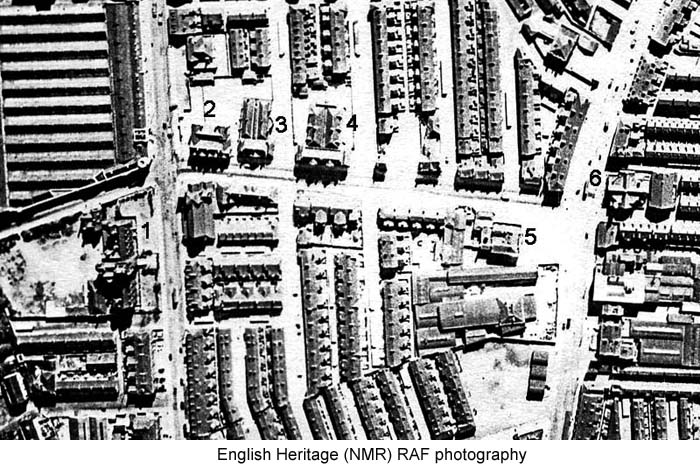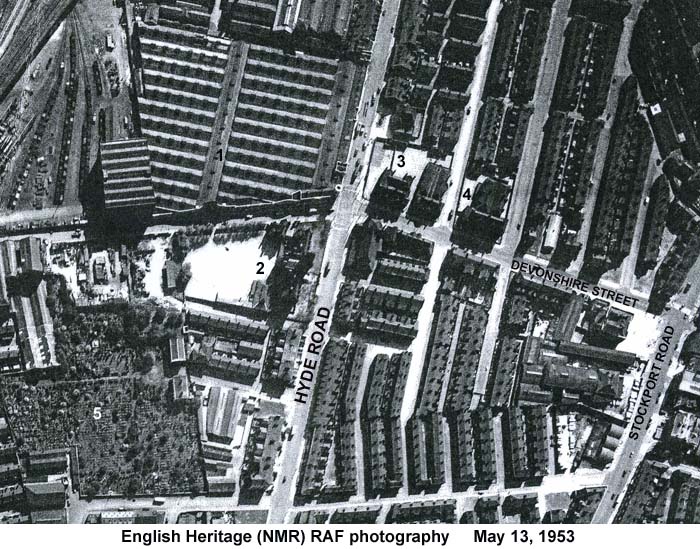|
History
records that there have
been schools in the area of the junction of Devonshire Street and Hyde
Road, in Ardwick, Manchester, for more than 130 years. There was a
church school housed in St. Mathew's Hall before 1870. In the years
that followed three school sites were developed, and by the end of the
1950s Nicholls Boys' Secondary School (1 below), Ardwick Girls'
Secondary School
(3 below) and The Ardwick Technical High School (4 below) were
neighbours.
(Number
5 above is the Devonshire Pub, number 6 is The Octagon) In
1967 the
three schools joined in the Comprehensive movement to form the Nicholls
Ardwick High School. After a while the name was changed again to honour
a former pupil, becoming the Ellen Wilkinson High School. Today only
one of the three sites remains. The Ellen Wilkinson High School is now
the Manchester College of Art and Technology and the campus is called
Nicholls 6th Form Centre. This web site strives to tell the story of
how these schools were founded and how they came together before
finally closing their doors forever.
The story is not a simple one to unravel and I am relying heavily on a book written by the school's headmaster for 25 years, Donald Woodhead. Mr. Woodhead remains a vivid memory from my school days. I found him to be a charming man with a keen sense of humour, but nevertheless a man somewhat apart from us in his grand office at the front of the school. Those who stood on Mr. Woodhead's line, beside the pillar in the hall, probably knew him better. In August 1980, after he had retired, Donald Woodhead published "A Century of Learning - The History of a School in Ardwick, Manchester". 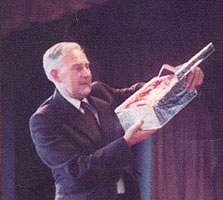 The book lays out changes in educational politics and philosophies that resulted in physical modifications to the schools, name changes and adjustments in the make-up of the student body. Donald Woodhead was there in 1967 when the schools merged. In typical fashion, he addressed the school at the Speech Day Ceremony in October of 1966 and said, "As we embark on this school year, which will be the last for the school in its present form, the future should be faced with confidence. In the 1880's the school would be correctly described as a school serving the area, having as its scholars those who were fortunate enough to have the privilege of education in those days. The school has fulfilled many roles since then, always successfully. I can only say that when the proposed merger with two equally important neighbouring schools takes place next September, there is no reason why there should not develop out of the union a fine school, embodying and putting into practice new philosophies, giving equal opportunity for all - a school for this fine city to be proud of." Telling the story of a school involves much more than describing the building and the facilities within. It is the story of a community of teachers and pupils and, in this case, of their interactions over many generations. It is unlikely that any two people had the same experience or that the memories individuals have of the school will be the same. Some people will remember their years fondly, whilst others will only rember being glad that they were over. Whilst some will remember teachers who inspired and encouraged them, others will remember those teachers who used sarcasm and physical punishment to impose their authority. There will be those who feel that the school was instrumental in preparing them for the world of work and further education, whilst others will remember it as an archaic institution that left them ill prepared for later life. Many have expressed their sense of loss to find that their school is gone, others feel that demolition was the best thing to happen to it. I will do what I can to reflect the story as I know it and to provide a forum for others to join in the storytelling. I want this history to be as accurate and as unbiased as possible. However, I will not apologise for the fact that I draw the line at including on the site derogatory and offensive comments about individuals whether staff or students. Those who have axes to grind will have to look elsewhere or save their stories for another forum. I don't believe that it is re-writing history to refrain from impuning people with allegations that many are no longer around to refute. The only fragment of the Ardwick Technical School that remained in 2000 was a portion of the wall that stood on the Devonshire Street side of the boys' gate. One can only wonder what other fragments of this school lie beneath the rubble piles which are hidden under the spreading weeds.  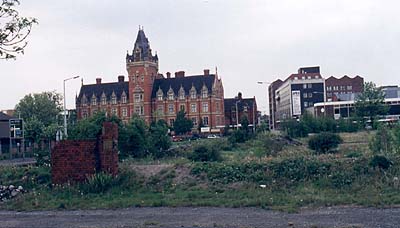 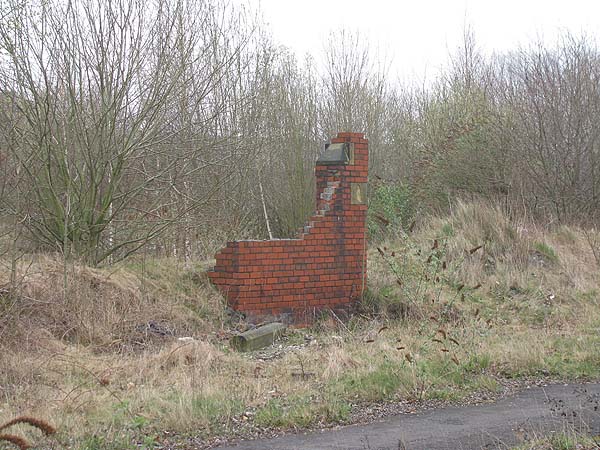 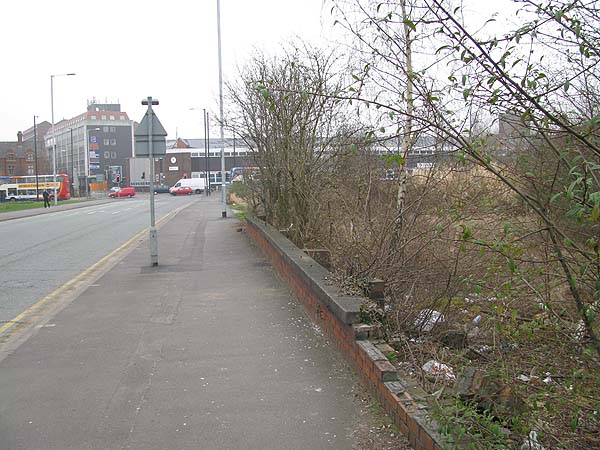 May 2009 What
I can guarantee is that,
even when that little piece of wall is gone, the school will not be
forgotten and hopefully a fragment of it can live on in this web site.
One thing that does remain is
the magnificent Nicholls Hospital Building which is now a campus of
City College but in its last life as a secondary school was the Ellen
Wilkinson High School.
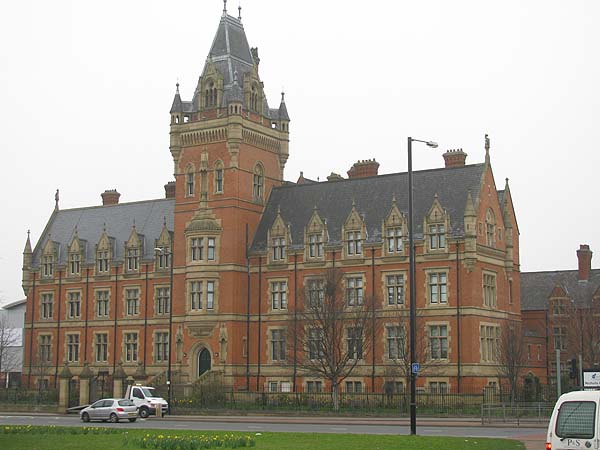
|
